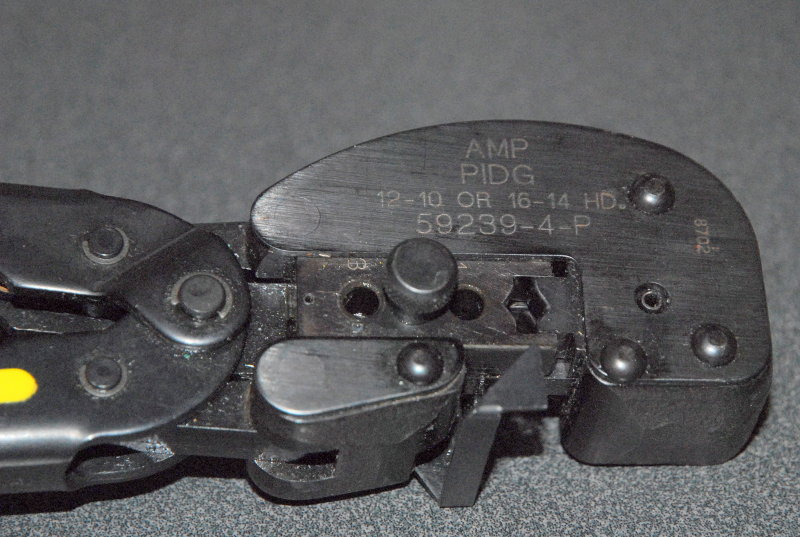Hello MaineSail,
You mention the AMP for yellow only. Could you elaborate on that a bit??? What do you use for other sizes/colors? Is this the only crimper you have faith in or is it just for this particular connector. This is new to me and I am looking to get a crimper and wonder I should be looking for.
Great work as always. Thanks so much for sharing with us.
John
The crimp tools I use are the AMP T-Head for red & blue and the AMP yellow tool. These are aerospace/aircraft grade tools that carry industry certifications. They are OBSCENELY priced but my buddy who is a Big Whig at Bombardier / Lear Jet set me up with a re-builder/re-calibrator and I got them both used and re-built & calibrated and certified for a very good price. If I am to put my name on electrical work these are the tools I use. Overkill? Probably but I sleep well and I do enjoy finely crafted tools....
The other ratcheting tools all held over 80 pounds of force including the $15.00 Harbor Freight tool. This exceeds the ABYC recommendation of 35 pounds for 12GA wire by double. I do however think that 35 pounds for 12GA is not a suitable crimp standard but it is what it is and even the cheapest double crimp ratcheting tool bested this standard.
The Ancor ratcheting crimper held a very respectable 126 pounds and the AMP held 192 on video but held over 200 pounds on one particular try before the wire failed. I have a photo of it holding steady at a 189 pound static load not just a quick pull until fail. None of the other tools even come close the the AMP tools but that should be expected as you do often get what you pay for. The difference is that the AMP tools crimp in a Guillotine fashion with the dies coming straight down like a forge press and not at an angle like a scissor as the cheaper ratcheting tools do. The AMP's also do not allow the terminal to squish wider as they are narrower and more properly swage the fitting compressing the entire terminal smaller not just squishing it and allowing it to squish out to the sides. Real "technical" description huh..

Interestingly enough my tests have shown that these crimpers perform exactly as they are priced... Low to high but that is likely just luck of the draw..
Performance wise the best of the non AMP double ratcheting tools is the Ancor product then the Pro's Kit which is a very good value doing both single crimps for heat shrink and double crimps when you order the proper dies and then the HFT tool at $15.00.
The cut, strip crimp tools are flat out dangerous in my opinion. They lack the proper leverage to even hit the minimum ABYC requirement for pull out force.
BTW the Pro's Kit tool is not any better ergonomically and has a tough pull usually requiring two hands when compared to the Ancor which can often be done with one hand. Still the Pro's Kit is an exceptional value. It cost me under $50.00 delivered, with the dies to do both double crimps and single.
This crimp head means business:

This is the red/blue tool:



